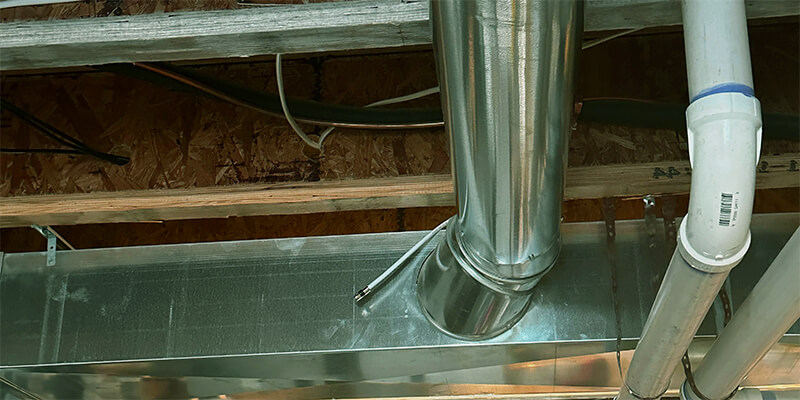At United Air Duct Cleaning and Restoration Services in Katy, TX, we understand the critical role that proper supply and return air duct placement plays in HVAC efficiency. In this comprehensive guide, we will explore the best practices for supply and return air duct placement, discuss alternative keywords, and provide tips to ensure your system runs smoothly.
Importance of Supply and Return Air Duct Placement
Proper placement of supply and return air ducts is essential for maintaining an efficient HVAC system. This placement ensures optimal airflow, which leads to better temperature control, improved indoor air quality, and energy savings. Inadequate placement can result in uneven temperature distribution, higher energy bills, and reduced system efficiency.
Enhanced HVAC Efficiency
The primary benefit of optimal supply and return air duct placement is enhanced HVAC efficiency. When ducts are correctly positioned, air circulates more effectively, leading to better temperature control and energy savings. Efficient airflow reduces the workload on your HVAC system, which in turn lowers energy consumption and extends the system’s lifespan.
Improved Indoor Air Quality
Correctly placed air ducts ensure that air flows freely and contaminants are removed efficiently. This helps maintain a healthier indoor environment, free from dust, allergens, and other pollutants. Proper duct placement prevents the circulation of contaminants and maintains efficient airflow, significantly improving indoor air quality.
Comfort and Consistency
Strategically placed ducts ensure consistent airflow throughout your home, eliminating hot or cold spots. This results in a more comfortable living environment, regardless of the season. Consistent temperature regulation enhances overall comfort and reduces the frequency of HVAC system adjustments.
Best Practices for Supply Air Duct Placement
Positioning Supply Vents
Supply vents should be positioned to distribute air evenly throughout the room. Ideally, they should be placed high on the walls or ceiling to allow air to flow downward, ensuring even temperature distribution. This placement helps in maintaining a balanced and comfortable indoor environment.
Avoiding Obstructions
Ensure that supply vents are not obstructed by furniture, curtains, or other objects. Obstructions can impede airflow, reducing the efficiency of your HVAC system. Keeping vents clear allows for optimal air distribution and system performance.
Duct Insulation
Proper insulation of supply ducts is essential to prevent heat loss or gain as air travels through them. Insulated ducts help maintain the desired temperature, improving energy efficiency and reducing costs. This measure is particularly important in areas with extreme temperatures.
Best Practices for Return Air Duct Placement
Centralized Return Vents
Return vents should be placed in central locations to effectively pull air from all areas of the room. This helps maintain balanced air pressure and efficient circulation. Centralized placement ensures that air is drawn evenly from throughout the space, promoting better system performance.
Low Placement for Return Vents
Return vents are typically placed low on the walls or near the floor. This placement allows for the efficient removal of cool air during the heating season and warm air during the cooling season. Low placement enhances the overall efficiency of the HVAC system by promoting optimal air circulation.
Avoiding Contaminants
Ensure that return vents are not located near sources of contaminants, such as kitchens or bathrooms. This prevents the circulation of odors and pollutants throughout your home. Proper placement away from these areas helps maintain a cleaner and healthier indoor environment.
Combining Supply and Return Duct Strategies
Balanced Airflow
Balancing supply and return ducts is crucial for maintaining optimal airflow. This balance ensures that the HVAC system can efficiently distribute and remove air, maintaining a consistent indoor climate. Balanced airflow reduces strain on the system and promotes better energy efficiency.
Zoning Systems
Implementing zoning systems can help manage airflow more effectively in larger homes. Zoning allows you to control the temperature in different areas independently, improving comfort and efficiency. This approach ensures that each zone receives the appropriate amount of conditioned air based on its specific needs.
Regular Maintenance
Regular maintenance of your HVAC system, including cleaning and inspecting ducts, is essential to ensure optimal performance. At United Air Duct Cleaning and Restoration Services, we offer professional duct cleaning services in Katy, TX, to keep your system running smoothly. Regular maintenance helps identify and address potential issues before they become major problems.
Understanding Duct Design
Proper duct design is critical to ensure efficient airflow. Ducts that are too small can restrict airflow, while those that are too large can lead to energy loss. Consulting with a professional can help determine the appropriate duct size for your system. Additionally, the material of the ducts can impact their performance and durability. Common materials include galvanized steel, aluminum, and fiberglass, each with unique properties that can affect efficiency and lifespan.
United Air Duct Cleaning and Restoration Services
At United Air Duct Cleaning Katy, TX , we are committed to providing top-quality air duct services. Whether you need installation, maintenance, or repair, our team of experts is here to help. We use high-quality materials and offer professional installations to ensure your HVAC system operates efficiently. Contact us today to schedule a service and ensure your air ducts are placed optimally for the best performance.
FAQs
1. Why is the placement of supply and return air ducts important?
Proper placement ensures efficient airflow, energy savings, and consistent indoor temperatures. It also improves indoor air quality by effectively removing contaminants.
2. How often should air ducts be cleaned?
Air ducts should be cleaned every 3 to 5 years, depending on usage and environmental factors. Regular cleaning helps maintain efficient airflow and indoor air quality.
3. Can I place furniture in front of supply vents?
No, placing furniture in front of supply vents can obstruct airflow and reduce HVAC efficiency. Ensure vents are clear of obstructions for optimal performance.
4. What are the benefits of insulated air ducts?
Insulated ducts prevent heat loss or gain during air travel, improving energy efficiency and maintaining the desired indoor temperature.
5. How can I balance supply and return air ducts?
Balancing can be achieved by ensuring equal airflow through both ducts. Consulting a professional can help in correctly balancing your system for optimal performance.
6. What are zoning systems in HVAC?
Zoning systems allow you to control the temperature in different areas of your home independently. This improves comfort and energy efficiency by targeting specific zones.
7. How can I improve indoor air quality with duct placement?
Proper duct placement prevents the circulation of contaminants. Regular maintenance and strategic placement of return vents away from pollutant sources can enhance air quality.
Conclusion
By following these guidelines, you can ensure that your HVAC system operates efficiently and provides optimal comfort. For professional air duct services in Katy, TX, trust United Air Duct Cleaning and Restoration Services. Contact us today to schedule your service and keep your home comfortable year-round.


